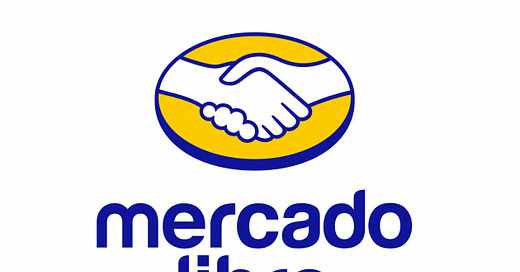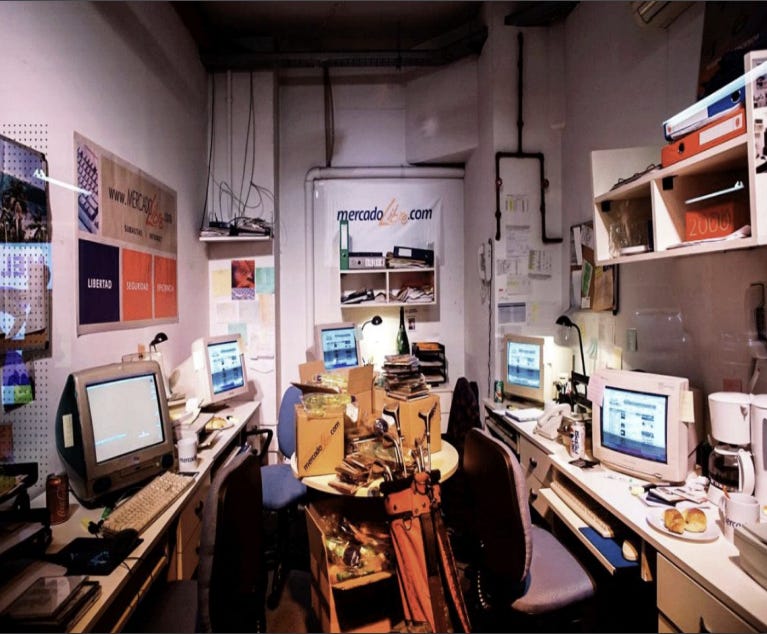MercadoLibre Stock Analysis & Deep Dive
Just another Amazon of South America or is there more to be discovered?
Intro
A lot of companies get the “the next Amazon” label attached. Most of the time the label is unjustified since Amazon is in a realm of its own. A couple of companies come to mind, where the label could be justified. Among those are the South Korean Coupang and the subject of this deep dive: MecadoLibre. I wanted to learn more about the company and understand if this could be really a (local) version of the next Amazon.
The Company
MercadoLibre is based in Uruguay, (from now on I shall refer to it as Meli) and is the largest e-commerce ecosystem in Latin America and is present in 18 countries. Meli was founded in 1999 and splits its business into six different segments. These are Mercado Libre Marketplace, the Mercado Pago Fintech platform, the Mercado Envios logistics service, the Mercado Ads solution, the Mercado Libre Classifieds service, and the Mercado Shops online storefronts solution.
This picture shows how it all started and it reminds me of the famous photo of Jeff Bezos in the starting days of Amazon sitting on this desk with the amazon.com banner next to him. Today Meli is one of the five largest companies by market cap in South America.
The majority of the more than 40,000 employees are based in Brazil (40%) and Argentina (25%). In 2022 alone, Meli hired 10,000 additional people. 40% of the staff are working in the shipping department and the remaining 60% fulfill office roles. The employees outside of the shipping department are free to choose where to work from and Meli offers up to 100% home office in order to attract talent across the continent.
The Industry
Latin America / South America is an often overlooked geography in business. With more than 650 million people and one of the fastest-growing e-commerce rates, it provides ample opportunity. As of 2020, Latin America was a rather small market on the global scale with strong projected growth in e-commerce.
Meli is dominating the market and will profit strongly from the projected growth.
The Business
Meli classifies its businesses into two segments: Commerce and Fintech.
Commerce:
The Mercado Libre Marketplace is very similar to the Amazon store that we know in the West. This is the landing page for the Argentinian store.
The Mercado Envios logistics solution is very similar to the fulfillment by Amazon (FBA) solution. Third-party sellers can use this service for warehousing and fulfillment services.
Just like the big brother Amazon, Meli has their air fleet called Meli Air which covers routes across Mexico and Brazil to shorten delivery times. In total, almost 80% of all shipments were delivered within 48 hours to the customer.
Other products include:
an online listing service where users can list and purchase motor vehicles, real estate, and services.
a digital storefront solution for users to create their digital stores
a loyalty program called Meli Mas which you either activate through points or by paying for it. You will get discounts on shipping, access to third-party video content like Disney+ (hello Amazon Prime), higher interest rates on savings accounts, and many more.
This video gives a good overview of Meli’s commerce business:
Mercado Ads is an advertisement platform, which enables companies to use the wide reach of the Meli marketplace to show advertisements for the products. When you consider that Amazon is one of the largest advertisers now, this move to copy the business makes perfect sense.
As of Q1/23: “Our advertising business continues to grow rapidly across geographies, with revenue as a percentage of GMV reaching 1.4% in Q1’23. This is up 30bps year-on-year on a much higher GMV base, which shows that Ads revenue growth - which remained consistent with prior quarters at 62% year-on-year in US dollars - continues to significantly outpace GMV growth”. As of Q3/23: “Revenue from our advertising services grew above 70% on an FX-neutral basis for the sixth quarter in succession, and is now equivalent to almost 1.7% of GMV”
Writing a deep dive takes me 40+ hours to get a proper understanding of the company and the attributes of the industry it is working in. You will support me a great deal if you a) subscribe to this substack and b) recommend this blog to your friends and family. To all existing subscribers: Thank you for your support! :)
Fintech:
To facilitate payments in the marketplace, Meli started Mercado Pago, an integrated payment solution. Mercado Pago was first an exclusive solution for Meli’s marketplace but has since been developed to also facilitate payments between registered Meli customers. Think of it as a local version of PayPal. On top of that, merchants can also use a branded or white-labeled version of Mercado Pago to facilitate the whole payment and checkout process on their website. This is similar to the “pay by Amazon” checkout button which you can find on many websites today.
To serve offline sales as well, Meli also offers point-of-sales solutions and pay by QR-code in traditional offline stores. As you can see, within Meli, there is a whole full-fledged payments provider, similar to what Fiserv is doing. Meli also thought a couple of steps ahead and you can also get debit cards through which users can spend the money stored on their Mercado Pago wallet. Merchants and consumer credits, extended warranty policies and even buying cryptocurrencies are possible with Mercado Pago as well.
In Q2/23: “We have seen improvements in perceptions of Mercado Pago as a “one-stop shop” for financial services”. In Argentina, Mercado Pago is so popular, that it hosts the the largest retail money market fund in the country.
Mercado Credito is a credit provider in Argentina, Brazil, Mexico, and Chile which has the goal to increase the lock-in effect of existing customers. Through the many data points that customers leave through buying items on the platform, Meli has a good understanding of the creditworthiness of their customers.
Now you may wonder: What else is Meli doing? Meli also offers an asset management platform, which enables users to use their Mercado Pago account similar to a bank account. Meli claims, that the return for funds held is higher than on traditional bank accounts and customers can use their funds to buy items online and offline or just withdraw the money from an ATM. Considering that unlike in Western Europe or North America, many consumers are under-banked, this is a great way to open new customer demographics and tie them to the Meli ecosystem.
The Fintech segment which mostly consists of Mercado Pago generates revenues through commissions for payment processing and fees and interest generated through loan issuance. The Fintech segment has shown even more tremendous growth than the already fast-growing Commerce segment.
The growth of the total payment volume (TPV) has been nothing short of astonishing.
From Q1/23: “As we highlighted in our Q4’22 Shareholder Letter, we believe that we now have the critical mass of services necessary for users to be able to have their principal financial services relationship with Mercado Pago. The objective of this long-term strategy is to develop a deeper relationship with our 44mn quarterly unique active fintech users, a user base that continued to grow at almost 25% year-on-year in Q1’23. For example, our Insurtech and Savingstech services are showing some positive early signs (albeit still small scale) and if we succeed in our strategy, we expect that these products should gain further traction.” The number of unique fintech users grew from 41.6m in Q3/22 to 48.8m in Q3/23.
If you want to read the full article and learn about the management, the composition of the segments, takeovers, risks, fundamental analysis, and a conclusion please subscribe and support my work. To all existing subscribers: Thank you for your support and enjoy the rest of the article!
Keep reading with a 7-day free trial
Subscribe to 41investments’s Substack to keep reading this post and get 7 days of free access to the full post archives.










